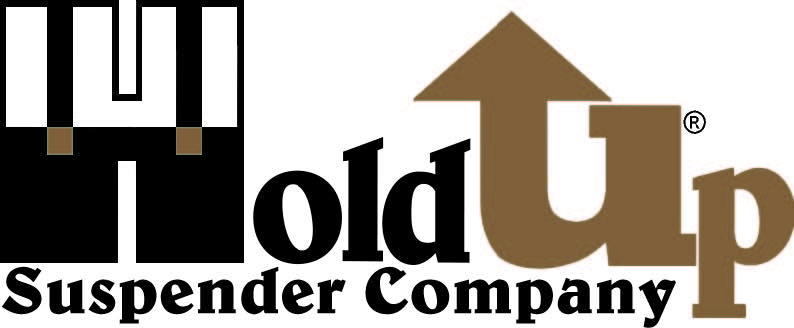Opening suspender clips, also known as brace clips, might seem straightforward. Still, there's a bit more to consider if you want to master the process without causing damage to your clothing or the suspenders themselves. Below is a comprehensive guide to opening suspender clips properly and tips for maintaining them.
The Evolution Of Suspender Clips
The evolution of suspenders includes the transition from button-on suspenders to clip-on suspenders. The latter was invented to provide an easier way to attach suspenders to trousers without the need for sewing buttons onto the waistband. This innovation became especially popular as trouser styles changed and the convenience of clip-on suspenders was recognized.
Understanding Suspender Clips
Before opening a suspender clip, it's important to understand the different types. The most common types are the traditional metal clasp and the modern plastic grip.
Types of Suspender Clips

There are primarily two types of suspender attachments:
- Button-On Clips: These are traditional and considered more formal. They attach to buttons sewn into the trouser waistband or onto special suspender buttons that can be moved around.
- Clip-On Clips: These are the more modern and casual forms. They come in various shapes and sizes, but their primary function is to clamp onto the fabric of the trouser waistband.
Anatomy Of Suspender Clips
Understanding how to open a suspender clip requires some knowledge about its anatomy. A typical suspender clip has the following components:
- Front Plate: This is the visible part of the clip when attached to your trousers.
- Rear Plate: This part presses against the back side of the fabric.
- Insertion Jaw: The portion where the fabric is inserted.
- Teeth or Grips: These are inside the insertion jaw to secure the clip to the fabric without slipping.
- Trigger or Release Arm: The mechanism you press to open the clip.
- Spring Mechanism: This provides tension to keep the clip closed when attached to the fabric.
How To Open And Close Suspender Clips

Opening The Clips
- Identify the Trigger: Look for the small lever or arm on one side of the clip. This is often a thinner piece of metal used to open the jaw of the clip.
- Apply Pressure: Press the trigger, usually upwards towards the main body of the clip, to open the jaws. This action should be gentle but firm to prevent damaging the mechanism.
- Prepare the Fabric: Before you attach the clip, make sure the fabric of your trousers is gathered and ready to be inserted into the clip. This should be done near the waistband, typically over the top seam, for added strength.
- Insert the Fabric: Once the jaws are open, slide the fabric between them, ensuring it sits evenly between the front and rear plates.
Closing The Clips
- Check the Position: Ensure the fabric is seated correctly and you have not caught any additional material or the shirt in the clip.
- Release the Trigger: Gently let go of the trigger or release the arm, allowing the spring mechanism to snap the jaws shut.
- Adjust for Comfort: Once the clip is attached, adjust the suspenders to ensure that the trousers hang correctly.
Tips For Using Suspender Clips
- Always open and close the clips gently to avoid weakening the spring mechanism over time.
- When attaching the clips, do not pull the fabric too far from the trouser top; this can create an unflattering bulge and may damage the trousers.
- Regularly check the teeth or grips inside the clip for any signs of wear or damage. If they become too sharp, they could tear your trousers.
- If the clips lose their grip over time, they may need to be bent slightly to restore their original tension. This should be done carefully to avoid breaking the clip.
Functionality And Engineering Of Suspender Clips
Modern suspenders must balance aesthetics with functionality. The engineering of suspender clips involves materials science and mechanical design. High-quality clips are typically made from metals that resist corrosion and wear, such as stainless steel or brass. The spring mechanism inside the clip must be robust enough to withstand thousands of uses, while the teeth must be sharp enough to grip fabric without causing damage.
Maintenance Of Clips
To maintain the integrity of the clips:
- Clean them regularly with a damp cloth to remove any dirt or grime.
- If the clips start to lose their grip strength, it might be possible to slightly bend the rear plate to increase tension. However, this should be done carefully to avoid snapping the clip.
- For clips with a moveable bar or ''trigger,'' ensure that it moves freely without sticking. If necessary, a tiny drop of oil can be applied to the hinge point to ensure smooth operation.
The Practicality Of Suspender Clips In Various Professions
Suspenders are not just a fashion accessory; they serve a practical purpose in various professions. For instance:
- Law Enforcement and Military: Suspenders help evenly distribute the weight of duty belts and equipment, reducing strain on the hips and lower back.
- Construction Workers: Heavy-duty suspenders hold up work pants and tool belts, allowing for better mobility and comfort.
- Performing Artists: Dancers, actors, and musicians may wear suspenders both as part of their costume and for their ability to keep clothing in place during vigorous movement.
Conclusion
While opening suspender clips is a simple task, understanding their background, types, and uses can enhance your overall experience with this classic accessory. With proper care and usage, suspender clips can be a functional and fashionable addition to your wardrobe. Whether preparing for a formal event or elevating your everyday style, the timeless charm of suspenders endures. Remember to handle the clips gently, maintain them well, and choose a style that complements your attire and occasion.

